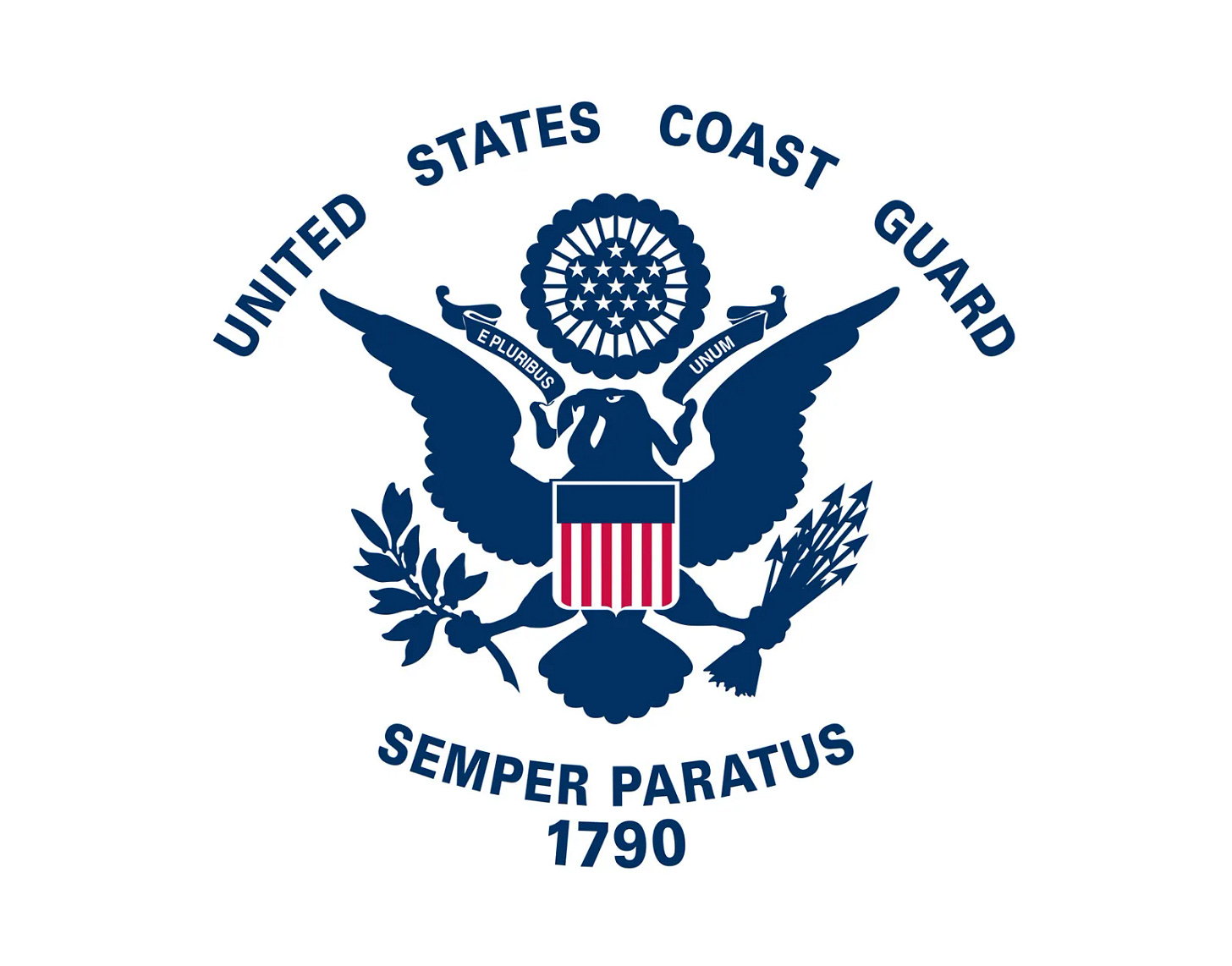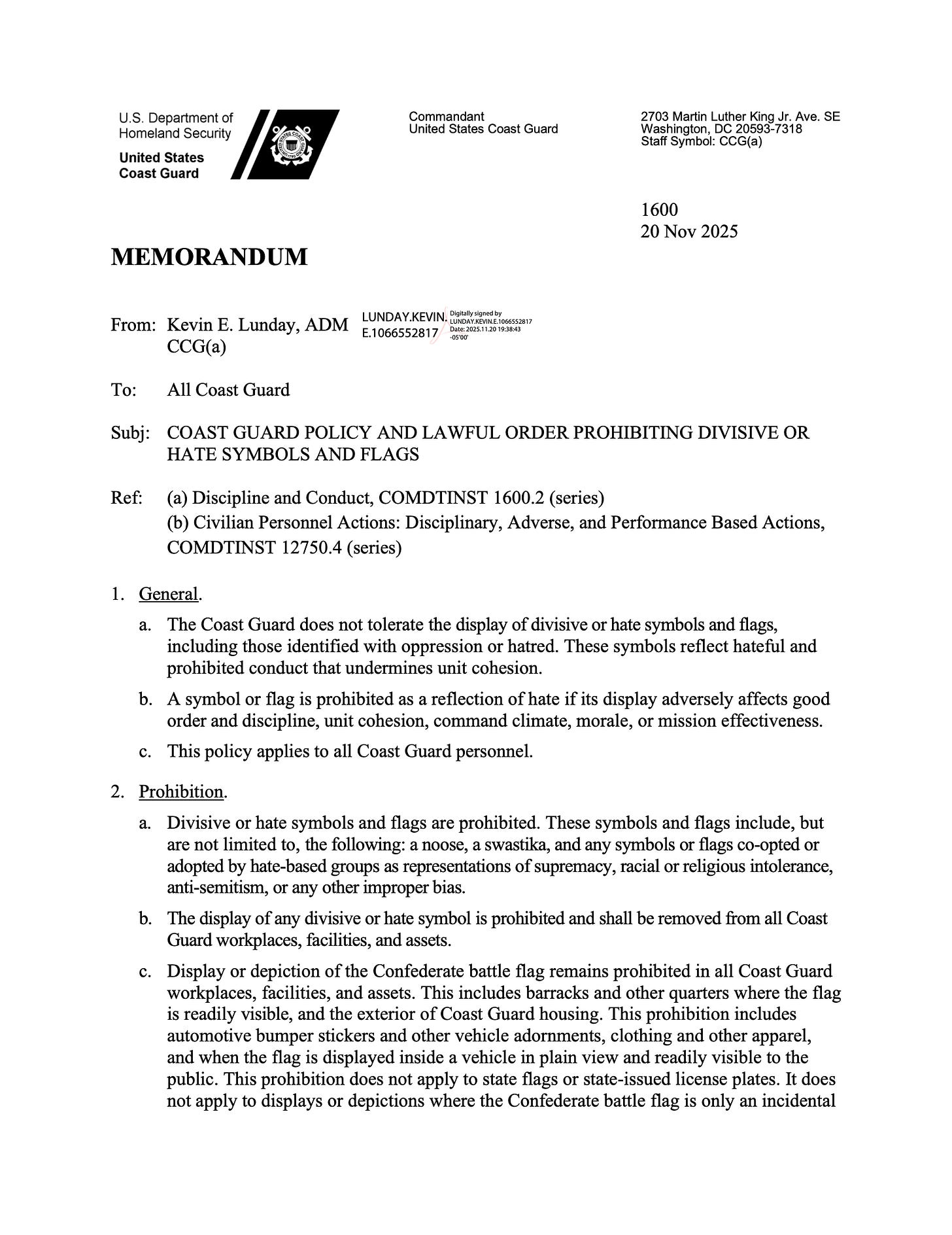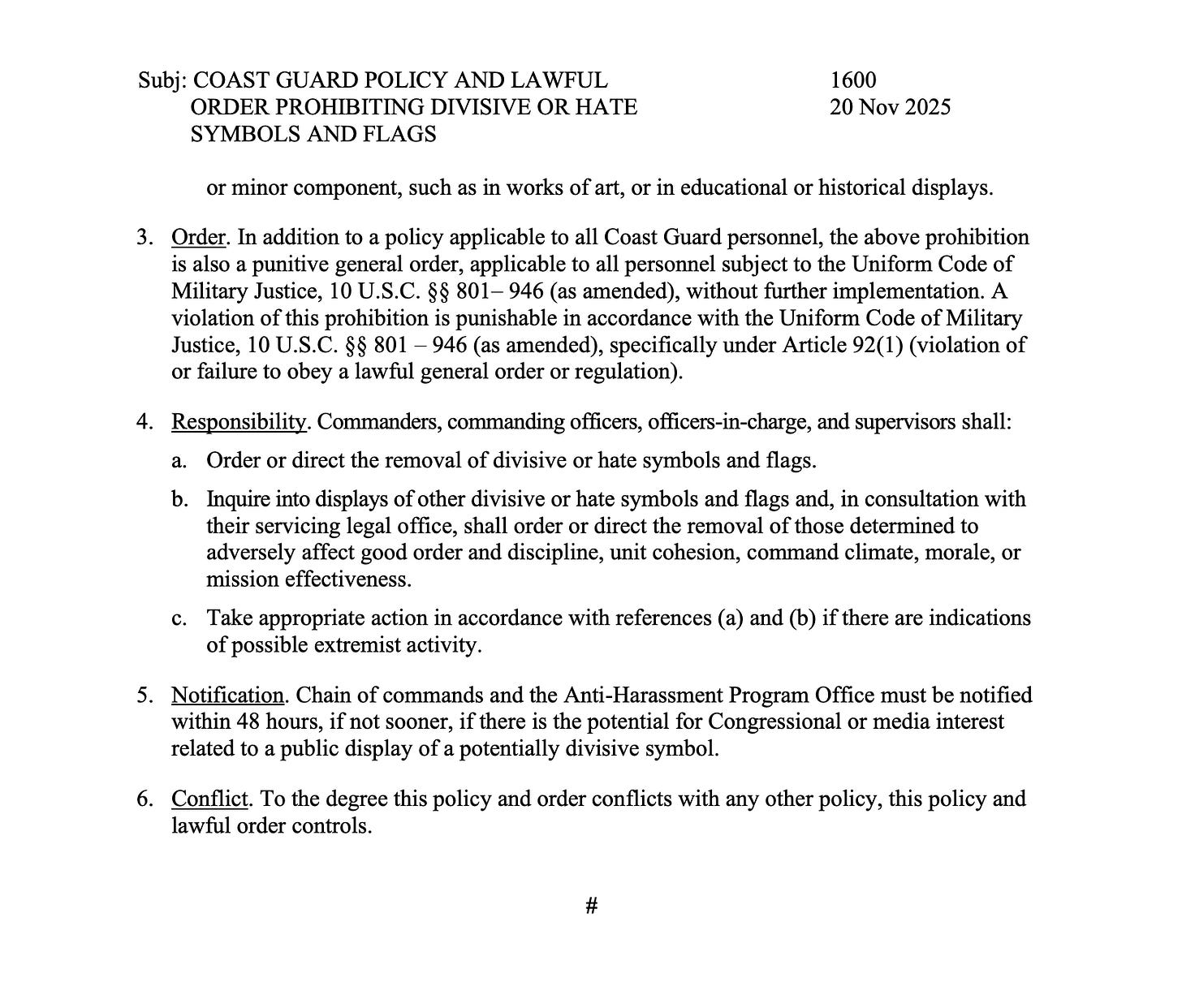UPDATE: The Coast Guard Does an About-Face on the Swastika
The service issued a new memo after backlash to the change in "hate symbols"
The U.S. Coast Guard was about to stop classifying the swastika as a hate symbol.
Under a new policy that was to take effect December 15, the Coast Guard would call the swastika “potentially divisive.” In other words, if you’re offended, it’s on you. The same would have gone for nooses.
The new rules were laid out in a document called “Harassing Behavior Prevention, Response and Accountability,” and it was signed on November 13 by the Coast Guard’s assistant commandant for personnel, Rear Adm. Charles E. Fosse.
The backlash was loud and ferocious. The US Coast Guard then quickly issued a memo Thursday that reclassifies swastikas and nooses as “hate symbols.”
The swastika isn’t an abstract symbol. Despite its more ancient origins, it’s the emblem of Nazi Germany, the regime that murdered millions of Jews, and the enemy that more than four hundred thousand American service members died fighting in World War II. To reclassify that symbol as merely “divisive” is to pretend its meaning is somehow up for debate.
It’s not.
How we got here
The Coast Guard is under the Department of Homeland Security, not the Pentagon. But the service has been reshaping its rules to fit the Trump administration’s new standards on hazing and harassment.
In September, Defense Secretary Pete Hegseth ordered a full review of harassment policies across the military, claiming the older rules were “overly broad” and hurt recruiting and readiness.
After that, acting Coast Guard commandant Adm. Kevin Lunday suspended the service’s earlier hate-incident policy — the one that clearly listed swastikas, nooses, and Confederate flags as symbols of hate.
However, Lunday insisted after the story broke that the Coast Guard was not changing the handling of displays of such symbols. He said Thursday that any display, use, or promotion of symbols like nooses and swastikas “will be thoroughly investigated and severely punished,” insinuating that no change was made.
But that flies in the face of the new rules as laid out in the November 13 document.

Lunday’s denial was followed up with a new memo.
What the new policy would have done
The new rules would have done more than change labels.
They put a forty-five-day deadline on reporting a swastika or noose — even for personnel deployed at sea for months with no way to report anything safely or privately.
The previous policy had no deadline. It simply told service members to report potential hate incidents to the chain of command immediately.
Now, if you’re stuck on a ship for sixty days next to someone with a swastika in their rack, you’re expected to report it within forty-five days or lose your chance to do anything about it.
The Coast Guard official spelled out the danger: “If you’re Black or Jewish, and the guy in the next bunk is flying a symbol of racial terror, do you feel safe reporting him while you’re trapped on a ship with him?”
Why this matters
This didn’t happen in a vacuum.
The Coast Guard’s shift follows a wave of leadership purges, changes in culture, rules, and a broader effort inside government to relax language about hate incidents. The “hate incident” category is being removed entirely. Everything is now just “harassment.”
This is happening at the same time we’re seeing:
– a documented rise in antisemitism in the United States
– a surge in extremist activity linked to current and former military members
– widespread pardons for veterans involved in the January 6th attack
– and a push inside the Pentagon to roll back diversity initiatives across the branches
The Coast Guard changing course on the swastika, the noose, and other hate symbols after backlash could be another sign of growing resistance to moves by the Trump administration.





